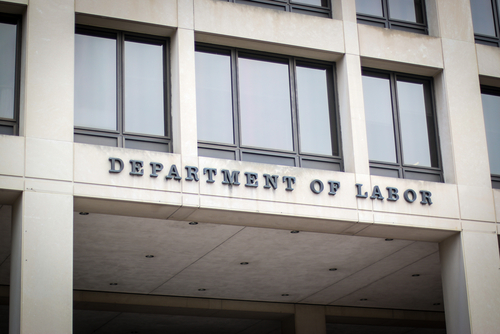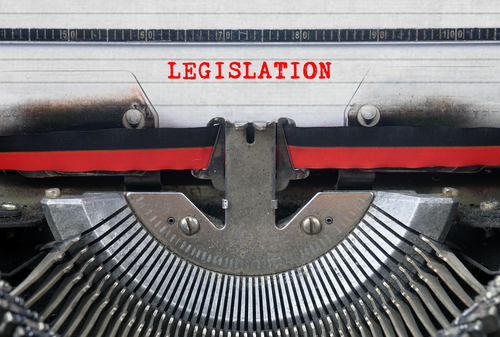 By Mark Wiletsky
By Mark Wiletsky
Paying sales employees on a commission basis can achieve multiple goals. Salespersons have an incentive to increase sales to earn more money while the company sees higher revenues without being locked into a guaranteed pay structure for underperforming employees.
Although various types of commission structures may be used, a common one is a draw against commission. Typically, this type of pay structure means that a sales employee is paid solely on the basis of commissions, but may be advanced a certain amount of money known as a “draw” for weeks in which the employee fails to earn a certain level of commissions. Then, the draw is deducted from future commissions when the employee’s commissions exceed the expected level. It sounds easy, but such arrangements can be fraught with FLSA traps.
Illustrative Case
The Sixth Circuit Court of Appeals (whose decisions apply to Michigan, Ohio, Kentucky, and Tennessee) recently examined an employer’s draw-against-commissions policy to determine whether the policy violated the minimum wage and overtime requirements of the FLSA. In that case, current and former retail and sales employees of hhgregg, Inc. and Gregg Appliances filed a lawsuit claiming that hhgregg’s commission policy violated the FLSA and state law in numerous ways. Here is a summary of the policy at issue:
- In pay periods when an employee’s earned commissions fell below the minimum wage, the employee would be paid a draw to meet the minimum-wage requirement
- In a non-overtime week (i.e., the employee worked 40 or fewer hours), the draw equaled the difference between the minimum wage for each hour worked and the amount of commissions actually earned
- In an overtime week (i.e., the employee worked more than 40 hours), the draw equaled the difference between one and one-half times the minimum wage for each hour worked and the amount of commissions actually earned
- Draw payments were calculated on a weekly basis
- The amount of the draw would be deducted from commissions earned in future weeks
- An employee could be subject to discipline, including termination, if he or she received frequent draws or accumulated a high draw balance
- Upon termination of employment, an employee with a draw balance was required to immediately pay the company any deficit.
Retail and Service Establishment Exemption
The FLSA exempts retail or service employees from the overtime pay requirement but only if (1) “the regular rate of pay of such employee is in excess of one and one-half times the minimum hourly rate applicable” under the FLSA, and (2) “more than half his compensation . . . represents commissions on goods or services.” This exemption does not relieve employers from meeting minimum wage obligations.
In the hhgregg case, the employer argued that the exemption applied. The Sixth Circuit disagreed, pointing to the allegation that the commission policy paid exactly the minimum hourly rate in a normal, nonovertime week, thereby failing to meet the exemption requirement that it be “in excess of one and one-half times the minimum hourly rate.” Because the exemption didn’t apply, hhgregg could not escape overtime pay obligations.
Deductions of Draws From Future Earnings Was Not An Illegal “Kick Back”
Under the FLSA, when an employee earns less in commissions than was advanced through a draw, the employer may deduct the excess amount from later commissions, if otherwise lawful. In the hhgregg case, the plaintiffs argued that the deductions were not “otherwise lawful” because the draws to meet the minimum wage were not delivered “free and clear,” as is required by DOL regulation. Plaintiffs argued that the draws were loans that the sales persons were expected to repay, functioning as an unlawful “kick back.”
The Sixth Circuit rejected the plaintiffs’ argument, finding that because the employees could keep the full amount of the draw at the time it was “delivered,” it was not an unlawful “kick back.” Thus, deducting the draw payments from future commissions did not violate the “free and clear” regulation.
Immediate Repayment Upon Termination
Plaintiffs alleged that making employees immediately pay the company any deficit in draws upon termination of employment violated the FLSA. On that claim, the Sixth Circuit agreed, at least to the extent of allowing the lawsuit to proceed. The Court looked to hhgregg’s written commission policy to find that the sales employees could reasonably believe that they would be liable to hhgregg for any unearned draw payments at the time of termination. Because that provision could violate the DOL regulation that minimum wage be provided “free and clear,” the Court held that plaintiffs alleged sufficient facts in their complaint to support their claim that the policy violated the FLSA.
Off-The-Clock Work
Plaintiffs further alleged that the company encouraged sales employees to attend required training and store meetings “off the clock” in violation of minimum wage and overtime requirements. Specifically, plaintiffs alleged that hhgregg managers approved of and sometimes encouraged sales persons to work “off the clock” to avoid incurring a higher draw.
hhgregg argued that any practice of off-the-clock work would not violate the FLSA because “by allegedly under-reporting working time in draw weeks and thereby lessening their draw payments, [plaintiffs] increased the amount of commission pay they subsequently received by the same amount.” Therefore, “the ‘off-the-clock’ work allegedly performed did not deprive them of pay; it simply shifted it to a different week.”
The Court rejected the company’s argument. Because the FLSA requires employers to pay the minimum wage for all hours worked on a week-by-week basis, an employer may not “shift” pay for hours worked to a future week. Therefore, the Court ruled that plaintiffs’ claim could continue.
Review Your Commission Policy
This recent draw-against-commission case highlights the FLSA issues that employers may face when implementing commission policies. If you use commission payments for any segment of your workforce, we recommend that you review your policy to confirm that it pays employees for all hours worked (e.g., no “off-the-clock” time). In addition, if you offer a draw against commissions, make certain that it meets your minimum wage and overtime pay obligations. Finally, if you rely on an FLSA exemption, such as the exemption for retail and service establishments, compare your commission policy to the exemption to ensure you meet the exemption test. Because this is a tricky area, consult with experienced counsel to resolve any questions or compliance concerns.


 By
By 
 By
By 
 By
By 



 By
By 
 By
By 
 By
By 
 By
By